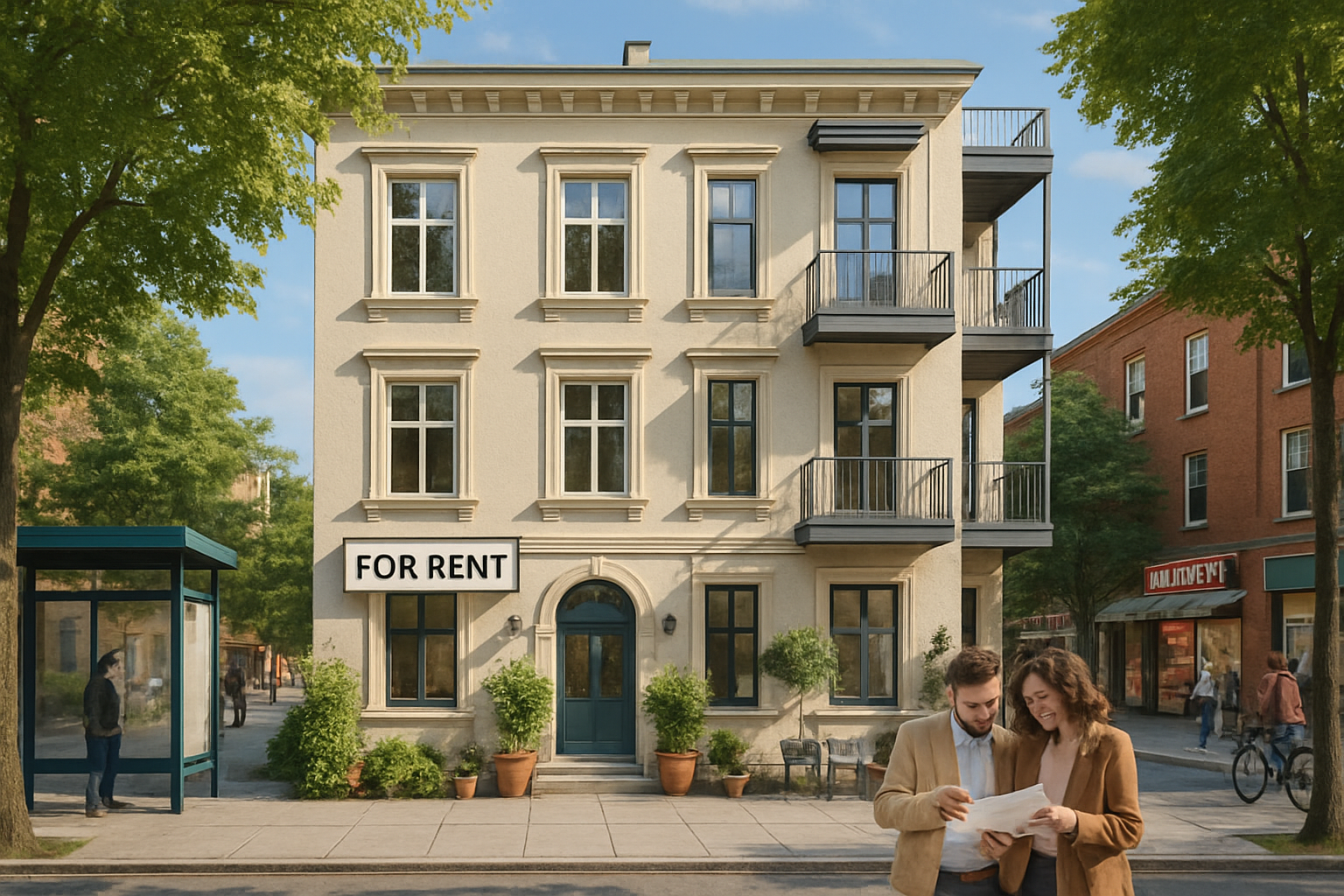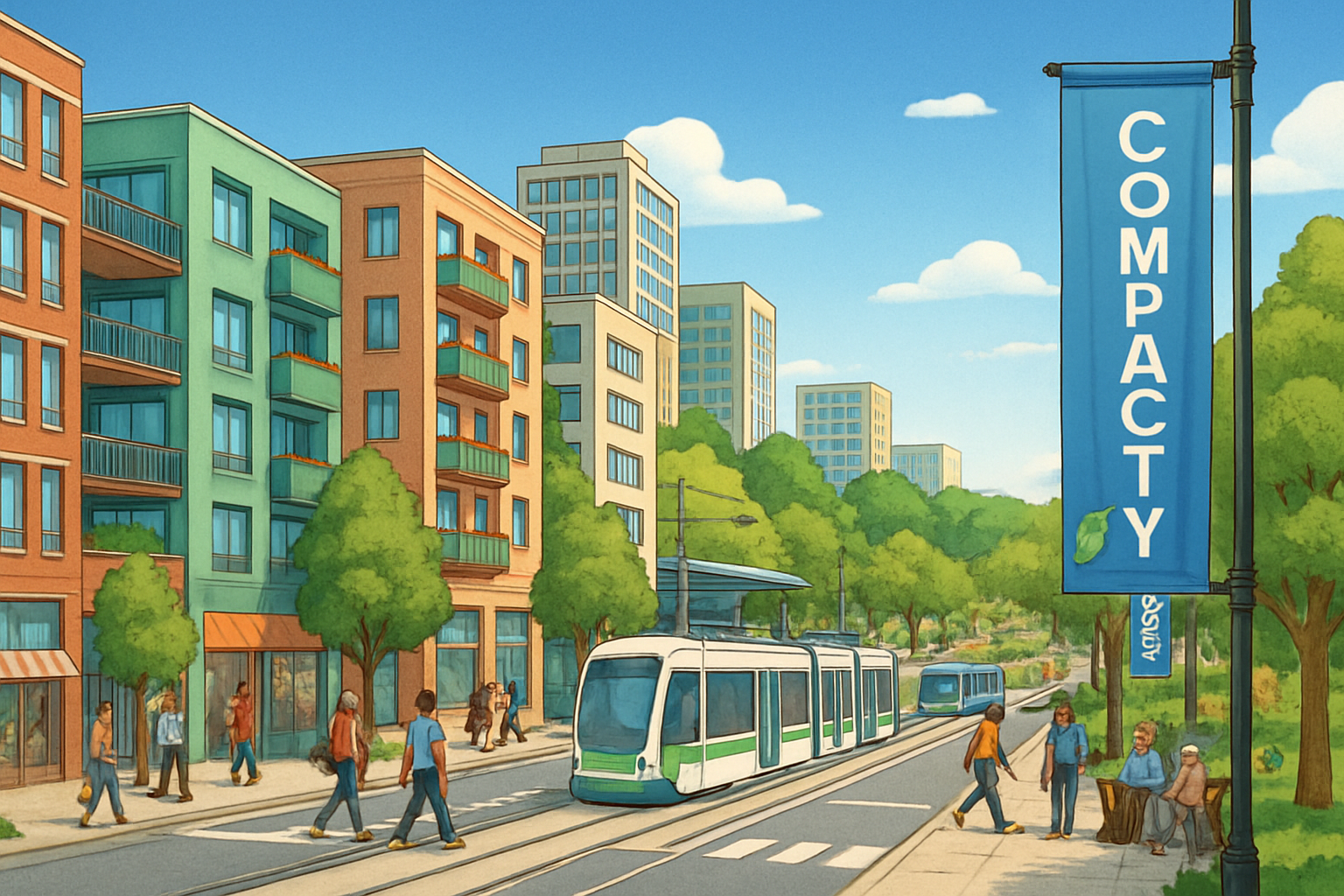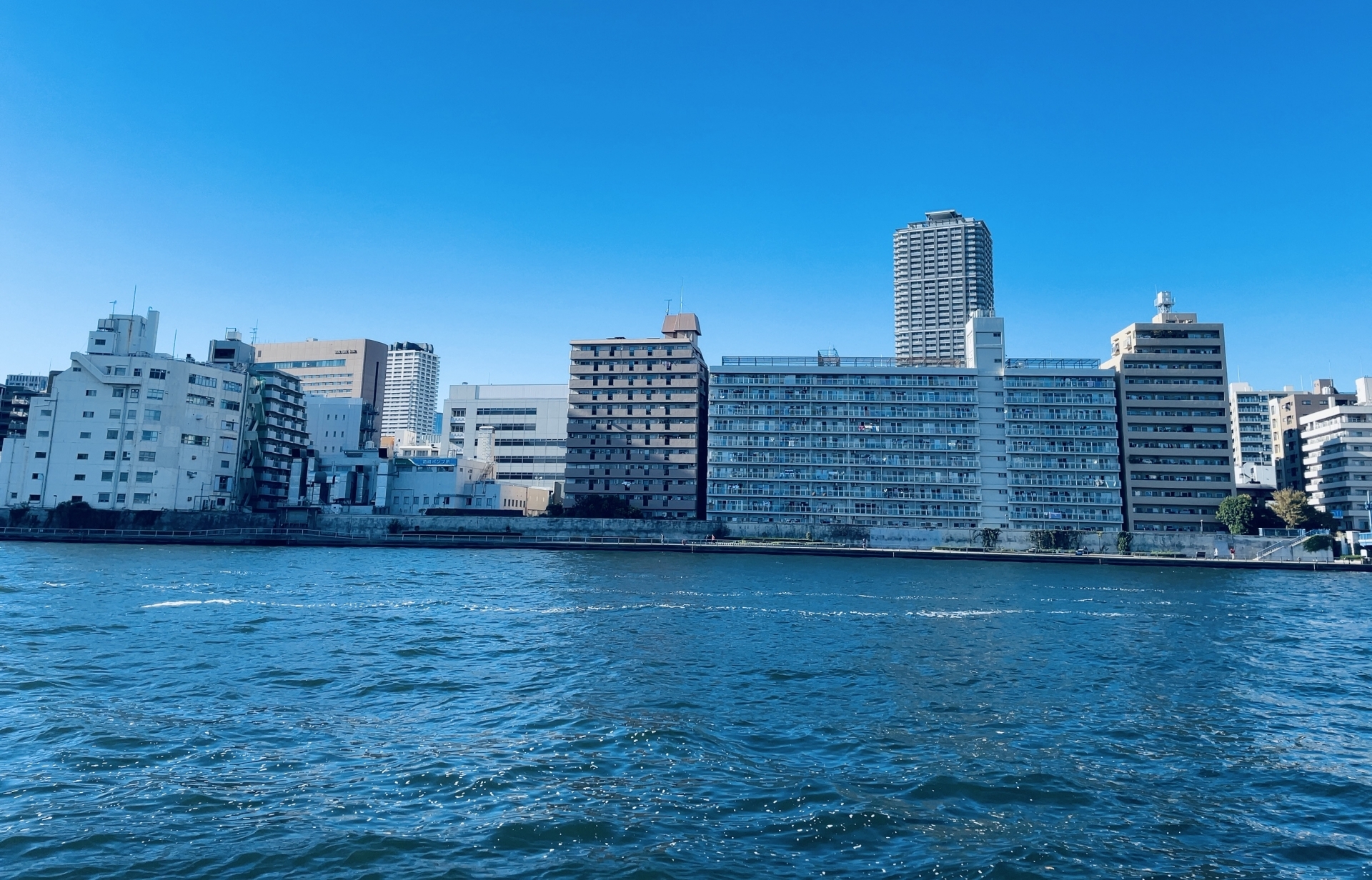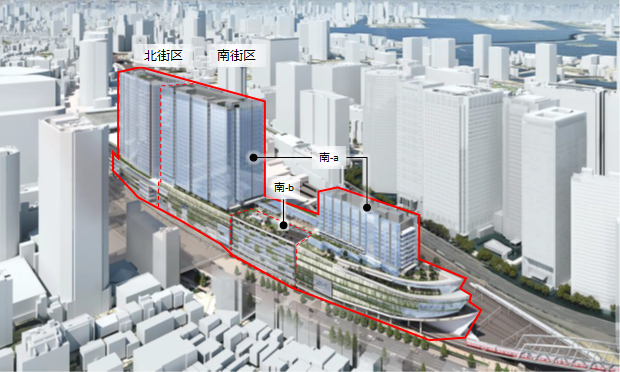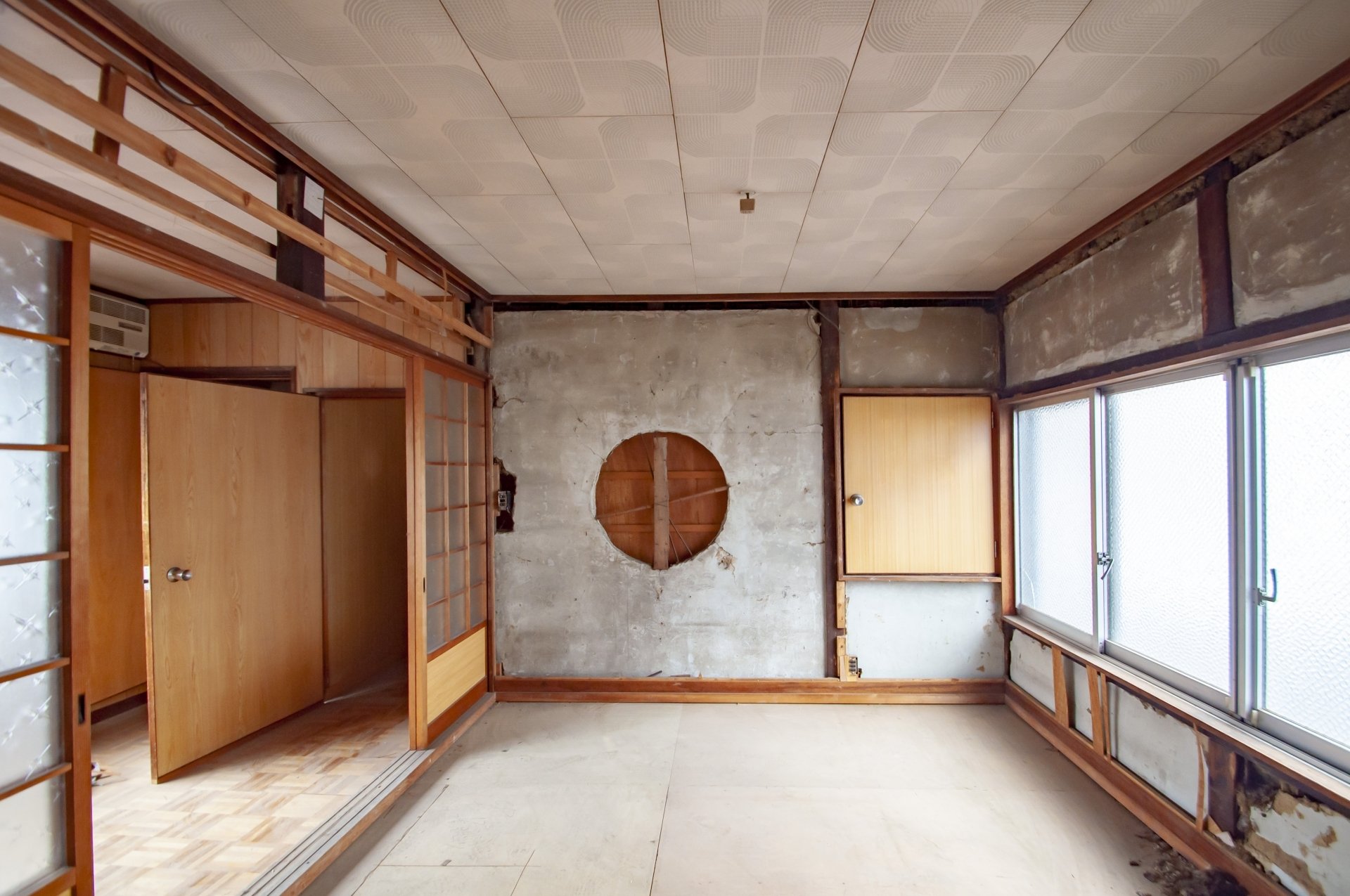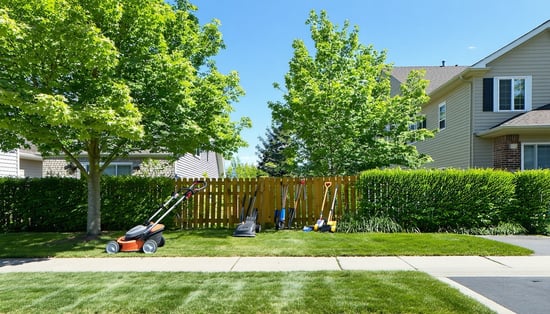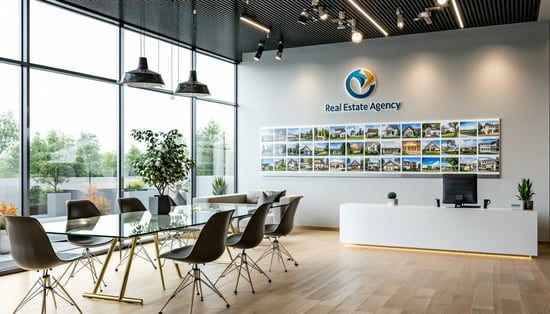In recent years, rental-combination housing has been gaining attention among those considering purchasing a home. Many people are interested in this attractive housing option, which allows them to own their own home while also earning rental income. However, not many people have an accurate understanding of the actual situation, advantages, and disadvantages of this type of housing.
Based on our extensive experience in real estate investment projects at INA&Associates Co., Ltd., we can say that rental-combination housing is indeed an attractive option, but it is also an investment that requires careful consideration.
While there are benefits such as mortgage interest deductions and tax incentives, there are also drawbacks such as the risk of vacancies and potential issues with tenants.
In this article, we will provide a comprehensive explanation of the basic mechanisms of rental-combination housing, construction costs, returns on investment, and tax incentives, to help you make an informed decision. We will also provide detailed explanations of the conditions for obtaining a mortgage, the requirements for mortgage interest deductions, and how rental-combination housing can be utilized as a strategy for inheritance tax planning.
We hope this article will serve as a valuable resource for those considering a rental-combination residence, those interested in real estate investment, and those seriously considering future asset formation.
Basic Knowledge of Rental-Combination Residences
What is a Rental-Combination Residence?
A rental-combination residence refers to a residential structure where the owner's living space and rental space for third parties coexist within the same building.Unlike typical single-family homes or apartments, the key feature of this housing type is that it combines residential functionality with income-generating property functionality.
The most important requirement for this housing type is the proportion of the building's total floor area occupied by the owner's residence. To qualify for a mortgage loan, the owner's residence must account for more than half of the building's total floor area. Meeting this condition enables the use of a standard mortgage loan, allowing for borrowing at more favorable interest rates compared to real estate investment loans.
There are various types of rental-combination housing, such as a two-story building with the first floor used for rental and the second floor as a residence, or a building divided into two sections with one side used for rental. In the case of a three-story building, the first and second floors may be used for rental, with the third floor as a residence. The key point is that each unit maintains independence while optimizing construction costs.
Differences from general residential properties
The most significant difference between mixed-use residential properties and general residential properties is the presence or absence of income-generating potential. While general residential properties are solely intended for living, mixed-use residential properties serve both residential and investment purposes. This distinction impacts every aspect of the property, from the design philosophy during construction to financing methods and tax treatment.
From an architectural design perspective, mixed-use residential properties must ensure the privacy of tenants while maintaining the quality of life for the owner.
Therefore, elements that are not considered in general residential buildings, such as the layout of entrances and staircases, soundproofing measures, and parking lot divisions, must be carefully considered.
In terms of financing, the ability to apply for a residential mortgage is a major advantage, as mentioned earlier. While real estate investment loans have interest rates of around 2% to 4%, residential mortgages offer significantly lower rates of around 0.5% to 1.5%. This interest rate difference is a crucial factor that significantly impacts long-term cash flow.
Types and characteristics of building structures
The building structures of mixed-use residential properties are primarily classified into three types: wooden, steel frame, and reinforced concrete (RC). Each structure has different characteristics and costs, and the appropriate choice must be made based on the location conditions and investment objectives.
Wooden structures are the most cost-effective option, with an average cost of approximately 700,000 yen per square meter.Its advantages include shorter construction periods and higher design flexibility, but it may be inferior to other structures in terms of sound insulation and durability. Especially in mixed-use residential buildings, sound insulation measures must be carefully considered to prevent noise issues between owners and tenants.
Steel frame construction is positioned between wooden and reinforced concrete structures, with construction costs ranging from approximately 850,000 yen to 1,000,000 yen per square meter.It offers better soundproofing than wooden structures and lower costs than reinforced concrete structures, making it a well-balanced option. Additionally, the smaller cross-sections of columns and beams allow for more efficient use of indoor space. Reinforced concrete structures are the most expensive, with construction costs ranging from approximately 860,000 yen to 1,070,000 yen per square meter. However, they excel in soundproofing, durability, and fire resistance, making them the most advantageous option from the perspective of maintaining long-term asset value.
In densely populated urban areas, high soundproofing directly contributes to tenant satisfaction, so even if the initial investment is high, long-term benefits can be expected.
Floor plan patterns and design points
When designing the floor plan for a rental-combination house, it is necessary to consider both the owner's lifestyle and rental demand. The most common pattern is a vertical division, where the first floor is for rental and the second floor and above are for the owner's residence.This layout makes it easier to ensure the owner's privacy and provides independent access to the rental portion.
The horizontal split type divides the building into two sections, with one side used for rental purposes. In this case, both households live on the same floor, so soundproofing measures become more important. However, this layout allows for easier sharing of gardens and parking spaces and offers significant cost savings in construction.
In three-story buildings, it is common to use the first and second floors for rental purposes and the third floor as a residence. This layout allows for two rental units, potentially increasing profitability. However, since the owner will reside on the top floor, stair climbing may become a daily burden.
The most important consideration during design is to clearly separate the living spaces of the owner and tenants.Common areas such as the entrance, stairs, and hallways should be kept to a minimum to ensure that each party can live independently. Additionally, the design should allow for future modifications to accommodate changes in family composition.
Advantages of mixed-use residential properties
Reduced loan burden through rental income
The primary advantage of mixed-use residential properties is the significant reduction in loan repayment burdens achieved through rental income.For example, if the monthly mortgage payment is 150,000 yen, and 80,000 yen in rental income is generated from the rental portion, the actual burden is reduced to 70,000 yen. This effect is particularly attractive for younger generations who face significant financial burdens when purchasing a home. The stability of rental income is greatly influenced by location and rental demand. Locations within a 10-minute walk from a train station, near commercial facilities, and schools are expected to have stable rental demand.
Additionally, family-oriented units such as 2LDK or 3LDK are more likely to have longer tenancy periods and stable income compared to single-occupant units like 1K or 1DK.
However, rental income always carries the risk of vacancies. If a tenant moves out, you must consider renovation costs and reduced income during the vacancy period. Therefore, it is important to establish a financial plan with sufficient flexibility, rather than relying solely on rental income for loan repayments.
Availability of mortgages
In mixed-use residential properties, mortgages may be available under certain conditions. The condition is that the self-occupied portion must account for more than half of the total floor area of the building. Meeting this requirement allows for significantly more favorable borrowing terms compared to real estate investment loans.
The interest rate difference between residential mortgages and real estate investment loans is typically around 1% to 2%. For example, borrowing 40 million yen over 35 years with a 1% difference in interest rates results in a total repayment amount that is approximately 7 million yen higher. This difference is a critical factor that significantly impacts the profitability of mixed-use residential properties.
Additionally, residential mortgages have more flexible down payment requirements, allowing borrowing with as little as 10% to 20% of the property price as equity.In contrast, real estate investment loans often require a down payment of 30% to 40%, allowing for a significant reduction in initial investment costs.
Application of the Residential Mortgage Interest Deduction
For mixed-use residential properties, the residential mortgage interest deduction can be applied to the self-occupied portion. This deduction allows 0.7% of the outstanding loan balance at year-end to be deducted from income tax, with a maximum application period of 13 years.
The deduction amount is calculated based on the proportion of the self-occupied portion. For example, if the total floor area of the building is 100 square meters and the self-occupied portion is 60 square meters, 60% of the loan balance is eligible for the deduction. If the year-end loan balance is 30 million yen, the annual deduction amount would be 30 million yen × 60% × 0.7% = 126,000 yen.
By utilizing this system, the effective interest rate on the loan can be further reduced. This benefit is particularly significant for high-income individuals with higher income tax liabilities, making it an important factor in enhancing the investment effectiveness of mixed-use residential properties.
Tax Benefits
Mixed-use residential properties are eligible for tax benefits in terms of inheritance tax, property tax, and income tax. These tax benefits provide significant advantages for long-term asset accumulation.
As an inheritance tax measure, the land used for the rental portion can be evaluated at a reduced value as “land with a detached house.”
Regarding fixed asset tax, the land is eligible for a reduction under the residential land exemption. For areas up to 200 square meters, the tax is reduced to one-sixth, and for areas exceeding 200 square meters, it is reduced to one-third. In mixed-use residential properties, both the residential and rental portions can benefit from this exemption, resulting in significant tax savings.
For income tax, expenses such as depreciation, repairs, and management fees for the rental portion can be deducted as necessary expenses. Especially in the early stages of construction, depreciation expenses are significant, and by offsetting losses on the books against other income, it may be possible to reduce the overall tax burden.
Efficiency in construction costs
Combo residential properties can significantly reduce construction costs compared to building a home and a rental property separately.By integrating common areas such as foundation work, exterior walls, and roof construction, duplicate construction costs can be avoided.
For example, if the construction costs for a home are 30 million yen and for a rental apartment are 20 million yen, totaling 50 million yen, the costs for a mixed-use residential property can be reduced to approximately 40 million yen. This 10 million yen cost reduction directly contributes to improving the investment return rate.
Additionally, efficiency improvements can be achieved in terms of facilities. By sharing facilities such as hot water supply systems, electrical systems, and water supply and drainage systems, it is possible to reduce facility costs and maintenance expenses. However, in the event of a malfunction in shared facilities, both households may be affected, so it is essential to thoroughly consider redundancy and maintenance systems for such facilities.
Flexibility for future relocation
Rental-combination housing offers flexible utilization options in response to changes in life stages. After children become independent, the residential portion can be reduced and the rental portion expanded, or conversely, if the family grows, the rental portion can be utilized as a residence.
Additionally, the property can be fully converted into a rental property in the future. In cases of relocation or job transfers, the residential portion can also be rented out, enabling the entire property to be managed as an income-generating asset. In such cases, if the location is favorable, stable rental income can be secured over the long term.
Furthermore, the property can be used as a two-generation home. When the older generation becomes elderly, the rental portion can be used as their residence, providing benefits in terms of care and supervision. This versatility is one of the major attractions of mixed-use rental properties.
Disadvantages of mixed-use rental properties
Risk of disputes with tenants
The most significant disadvantage of mixed-use rental properties is the risk of disputes arising from the fact that the owner and tenants live in the same building.In general rental properties, a management company acts as an intermediary, but in mixed-use rental properties, complaints or requests from tenants often come directly to the owner, leading to significant mental stress.
The most common issue is noise. Differences in daily schedules can lead to issues such as footsteps, television or music volume, or children crying. Especially in wooden buildings, soundproofing has its limits, so even minor daily noises can escalate into problems.Such issues directly affect the owner's quality of life and can become serious problems.
Disputes over garbage disposal and the use of common areas are also common sources of trouble. Issues such as failure to follow garbage disposal schedules, or differences in understanding regarding the use of shared parking lots or gardens, can lead to ongoing stress over daily living rules.
More serious issues include rent arrears and contract violations.In general rental properties, management companies handle such issues, but in mixed-use rental properties, the owner often must handle them directly, requiring knowledge and experience in legal procedures and negotiations.
Vacancy Risk and Impact on Revenue
In mixed-use rental properties, the impact of vacancies on revenue is more severe than in general rental properties. This is because the rental portion consists of only one or two units, so a single vacancy can have a significant impact on overall revenue.
For example, if a loan repayment plan is based on monthly rental income of 80,000 yen, a three-month vacancy would result in a loss of 240,000 yen in income. During this period, loan repayments must continue, placing a significant financial burden on the owner. Additionally, costs such as renovation expenses and brokerage fees to secure new tenants may be required, further expanding the actual loss.
The duration of vacancy periods is greatly influenced by location conditions and the attractiveness of the property.Properties located far from stations or with outdated facilities due to their age tend to face difficulties in securing tenants. Additionally, changes in the supply-demand balance of the rental market may make it difficult to maintain previous rent levels.
To mitigate vacancy risks, regular maintenance and equipment updates are necessary, but these costs also act as factors that pressure revenue. It is essential to fully consider the need for ongoing investments such as air conditioner replacements, wallpaper replacements, and repairs to plumbing and water supply systems.
Challenges in Sale or Inheritance
Mixed-use residential properties face challenges in future sale or inheritance compared to general residential properties. The most significant issue is the limited pool of potential buyers. For typical homebuyers, mixed-use residential properties are often avoided due to the hassle of management and the risk of tenant-related issues.
For investors, the presence of a residential portion reduces the property's appeal as a pure investment asset. Investors prioritizing investment efficiency tend to prefer properties where all units can be rented out, leading to lower market valuations for mixed-use residential properties compared to standard investment properties.
Inheritance further complicates matters. If multiple heirs exist, dividing a mixed-use residential property is physically challenging, often resulting in joint ownership.Jointly owned properties require the consent of all parties for important decisions such as sale or major repairs, which may hinder future management and operation.
Additionally, if heirs lack knowledge or experience in rental management, there is a risk of improper management leading to a decline in asset value. To avoid such issues, it is important to thoroughly consider inheritance strategies in advance and seek professional advice as needed.
Design constraints and limitations on flexibility
In mixed-use residential properties, the design must take into account both the residential and rental portions, resulting in significantly less design flexibility compared to a purely residential property. In particular, the requirement for residential loans that “the self-occupied portion must account for more than half of the total area” may prevent the realization of an ideal floor plan.
Privacy is also an important constraint.To separate the living spaces of the owner and tenants, separate entrances and staircases are required, which can increase construction area and costs. Additionally, reinforced walls and floors may be necessary for soundproofing, potentially making it difficult to utilize indoor space efficiently.
There are also restrictions on future renovations or layout changes. Major construction work is difficult when tenants are occupying the rental portion, and even renovations to the residential portion require consideration for tenants.As a result, it may be difficult to make flexible changes to the living environment in response to changes in life stages.
Low yield and investment efficiency
The yield of mixed-use residential properties tends to be lower than that of general rental properties. The surface yield is approximately 3% to 5%, and the actual yield is approximately 2% to 4%, which is significantly lower than the 8% to 10% yield of general rental apartments.
This low yield is attributed to high construction costs and restrictions on rental area. Since the owner-occupied portion accounts for more than half of the total area, the area available for rental income is limited, reducing investment efficiency. Additionally, design and facilities prioritizing residential quality tend to increase construction costs compared to general rental properties.
Furthermore, management costs must also be considered.
Even if the owner manages the property themselves, the time and effort required for tenant communication and property maintenance, when converted into monetary terms, further reduce the actual return. If management is outsourced to a property management company, a management fee of approximately 5% to 10% of the rental income is required, which also puts pressure on the return.
Complexity of management and the weight of responsibility
Owners of mixed-use rental properties must simultaneously fulfill the responsibilities of a landlord and a resident, making management tasks complex.When equipment malfunctions or repairs are needed, prompt action is required, while also considering the impact on one's own life. Legal responsibilities are also an important consideration. As providers of rental housing, owners are obligated to ensure the safety of the building, maintain equipment appropriately, and ensure the safety of tenants. Failing to fulfill these responsibilities may result in liability for damages. Additionally, proper handling of lease agreements, renewals, and security deposit management is necessary.
Tax matters also become more complex. It is necessary to appropriately allocate expenses between the residential and rental portions and file tax returns. This involves calculating depreciation expenses, distinguishing between repair costs and capital expenditures, and determining the scope of necessary expenses, among other tasks that require specialized knowledge. In some cases, consultation with a tax accountant or other professional may be necessary.
Construction Costs and Actual Returns
Detailed Analysis of Construction Costs by Structure
Construction costs for mixed-use residential properties vary significantly depending on the chosen structure. The table below summarizes the approximate construction costs by structure type for a mixed-use residential property with a total floor area of 70 tsubo (approximately 231 square meters).
Structure Unit Price per Tsubo Total Construction Cost Service Life Features
Wooden 700,000 yen 49,000,000 yen 22 years Short construction period, high design flexibility, limited sound insulation
Steel Frame 850,000–1,000,000 yen 59.5–70 million yen 34 years Balanced, moderate sound insulation
RC (Reinforced Concrete) 860,000–1,070,000 yen 60.2–74.9 million yen 47 years High sound insulation and durability, longer construction period
These costs include foundation work, structural work, interior finishing, mechanical and electrical systems, and landscaping. However, land costs, design fees, and various application fees are additional. Additionally, for mixed-use residential properties, extra costs for features such as separate entrances, stairs, soundproofing measures, and security systems should be considered.
Wooden construction offers the lowest construction costs but may require additional measures to improve soundproofing performance.For example, adding soundproofing materials or adopting double floors and ceilings can increase the cost per square foot by approximately 50,000 to 100,000 yen.
Steel-frame construction offers performance between wooden and reinforced concrete construction while providing excellent cost-effectiveness. It is particularly popular for three-story mixed-use residential buildings due to its balance of structural stability and economic efficiency.
RC construction requires the highest initial investment but allows for the maintenance of long-term asset value and the provision of an excellent living environment. Especially in densely populated urban areas, high sound insulation performance directly contributes to tenant satisfaction and the maintenance of rent levels, making it a promising long-term investment.
Methods for calculating yield and realistic figures
To accurately evaluate the investment effectiveness of mixed-use residential properties, it is essential to understand both surface yield and net yield.The surface yield is a simple indicator calculated by dividing annual rental income by the property price, while the net yield reflects the actual profitability after deducting various expenses.
Surface yield calculation formula: Annual rental income ÷ Property price (land cost + construction costs) × 100
Net yield calculation formula: (Annual rental income - Annual expenses) ÷ (Property price + Purchase-related expenses) × 100
The table below summarizes the yield ranges by location.
Location Surface Yield Net Yield Estimated Monthly Rent Vacancy Rate
Central urban areas (within a 5-minute walk from a station) 3.5-4.5% 2.5-3.5% 120,000-150,000 yen 5-10%
Suburban (within a 10-minute walk from the station) 4.0-5.5% 3.0-4.5% 80,000-120,000 yen 10-15%
Regional cities 5.0-7.0% 4.0-6.0% 60,000-100,000 yen 15-25%
When calculating the net return, the following expenses must be taken into account:
- Property tax and urban planning tax: 200,000 to 500,000 yen per year
- Fire insurance: 50,000 to 150,000 yen per year
- Maintenance reserve fund: 300,000 to 600,000 yen per year
- Management fees (if outsourced): 5-10% of rental income
- Vacancy loss: 10-20% of rental income
- Other (advertising costs, tax accountant fees, etc.): 100,000 to 300,000 yen per year
Example of income and expense simulation
Let's verify the investment effectiveness of a mixed-use residential property through a specific income and expense simulation. The following is a case of a mixed-use residential property with a total project cost of 60 million yen (land: 20 million yen, building: 40 million yen).
Item Amount Notes
Income
Rental income 1.2 million yen/year (100,000 yen/month × 12 months)
Expenses
Loan repayment 1.8 million yen/year (1.0% interest rate, 35-year repayment term)
Property taxes, etc. 300,000 yen/year
Insurance premiums 80,000 yen/year
Maintenance reserve 400,000 yen/year
Management fees 120,000 yen/year (10% of rental income)
Other expenses 150,000 yen/year
Total expenses 2,850,000 yen/year
Annual income and expenses -1,650,000 yen/year Before mortgage interest deduction
Mortgage interest deduction 280,000 yen/year (50% for the residential portion)
Net annual income and expenses -1,370,000 yen/year
In this example, rental income alone is insufficient to cover loan repayments, resulting in an annual out-of-pocket expense of 1,370,000 yen.However, this should be evaluated in comparison to the rent for an equivalent rental property if considered as housing expenses for one's residence.
Payback period and long-term profitability
The payback period for mixed-use residential properties is generally long-term, ranging from 20 to 30 years. This is because the presence of a residential portion reduces the pure investment efficiency, but it is necessary to comprehensively evaluate the effects of reduced housing expenses and asset accumulation.
The following factors are important for improving long-term profitability:
Future potential of the location: It is important to select a location where rental demand will be maintained despite the declining population. Factors such as station redevelopment, the attraction of universities or companies, and the availability of commercial facilities should be comprehensively evaluated.
Maintenance of the building's asset value: Regular maintenance and timely updates of facilities are essential for maintaining the building's asset value. In particular, updates to plumbing and air conditioning systems directly impact tenant satisfaction.
Maintaining rent levels: It is important to constantly monitor market trends in the surrounding area and set appropriate rents. Excessive rent increases increase the risk of vacancies, while rents that are too low compared to market rates can reduce profitability.
Utilizing tax incentives: By maximizing the use of mortgage interest deductions and various tax incentives, you can enhance the actual return on investment. It is important to monitor tax reform trends and seek professional advice as needed.
Mortgage Loans and Tax Incentives
Detailed Conditions for Using Mortgage Loans
To use a mortgage loan for a mixed-use residential property, several conditions must be met. The most important condition is that the self-occupied portion must account for more than half of the total floor area of the building. Meeting this condition enables eligibility for a standard mortgage loan, allowing borrowing under significantly more favorable terms compared to real estate investment loans.
The table below summarizes the main differences between mortgage loans and real estate investment loans.
Item Residential Mortgage Real Estate Investment Loan
Interest Rate 0.5–1.5% 2.0–4.0%
Down Payment 10–20% 30–40%
Repayment Period Up to 35 years Up to 30 years
Review Criteria Emphasis on individual creditworthiness Emphasis on property profitability
Group Credit Life Insurance Mandatory (included in premiums) Optional (separate premiums)
When reviewing a residential mortgage, the borrower's annual income, length of employment, and credit history are important factors. Generally, the debt-to-income ratio should be 35% or less, and rental income is often not considered in the review, so the borrower's ability to repay the loan with their own funds is crucial.
Additionally, when using a residential mortgage, the borrower must reside in the property themselves. Therefore, if the borrower plans to rent out the residential portion in the future due to relocation or other reasons, prior consultation with the financial institution is necessary.
Eligibility requirements and calculation method for the mortgage interest deduction
The mortgage interest deduction is an important tax incentive that can be applied to the self-occupied portion of a rental property. The deduction period is up to 13 years, and 0.7% of the outstanding loan balance as of the end of the year can be deducted from income tax.
The eligibility requirements for the mortgage interest deduction are as follows:
Requirement Condition
Floor area 50 square meters or more (registered floor area)
Residential Use Ratio: At least half of the floor area must be used for residential purposes
Loan Term: 10 years or longer
Income Limit: Total income of 30 million yen or less
Start of Residency: Residency must begin within six months of acquisition
The deduction amount is calculated based on the proportion of the self-occupied portion. For example, if the total floor area of the building is 120 square meters and the self-occupied portion is 80 square meters, the residential use ratio is 80 square meters ÷ 120 square meters = 66.7%.
Deduction Amount Calculation Example: - Year-end loan balance: 40 million yen - Residential use ratio: 66.7% - Deductible amount: 40 million yen × 66.7% = 26.68 million yen - Annual deduction amount: 26.68 million yen × 0.7% = 187,000 yen
However, there is an annual cap on the deduction amount, which is 350,000 yen per year for general residences and 450,000 yen per year for certified residences. Additionally, the deduction amount is capped at the income tax amount, and any excess is deducted from the resident tax.
Details of Various Tax Incentive Programs
In mixed-use residential properties, you can also benefit from multiple tax incentives in addition to the mortgage interest deduction. By appropriately utilizing these programs, significant tax savings can be expected.
Fixed asset tax reduction measures:
Under the special provisions for residential land, the fixed asset tax on land is significantly reduced. In mixed-use residential properties, both the residential and rental portions are eligible for this special provision.
Land area Reduction rate Eligibility conditions
Up to 200 square meters 1/6 Up to 200 square meters per residential unit
Over 200 square meters 1/3 Used as residential land
Fixed asset tax reduction for newly constructed residential properties:
For newly constructed residential properties, the fixed asset tax on the building is reduced for a certain period.
Residential type Reduction period Reduction rate Eligible floor area
General residential properties 3 years 1/2 Up to 120㎡
Fire-resistant or quasi-fire-resistant buildings with three or more stories 5 years 1/2 Up to 120㎡
Utilization for inheritance tax planning:
Residential properties with rental units are also effective for inheritance tax planning.The land for the rental portion is evaluated as “land with a rental house,” resulting in an approximately 20% reduction in evaluation compared to vacant land. Additionally, the building is evaluated as a “rental house,” resulting in an approximately 30% reduction in the fixed asset tax evaluation amount.
Specific Calculation Examples of Tax Savings
Let's verify the actual tax savings with specific numbers. The following table summarizes the annual tax savings for a mixed-use residential property with a total project cost of 60 million yen.
Tax Incentive Item Annual Tax Savings Calculation Basis
Residential Mortgage Interest Deduction 280,000 yen Outstanding mortgage balance of 40 million yen × 50% residential use ratio × 0.7%
Fixed Asset Tax Reduction (Land) 150,000 yen Reduction under the residential land special provision
Fixed Asset Tax Reduction (Building) 120,000 yen Newly constructed residential property reduction (3 years)
Income Tax Reduction (Depreciation, etc.) 200,000 yen Deduction of necessary expenses for the rental portion
Total Annual Tax Savings 750,000 yen
These tax savings are a crucial factor in significantly improving the actual investment return on a mixed-use residential property. In particular, the mortgage interest deduction continues for 13 years, resulting in total tax savings exceeding 3 million yen.
Important Tax Considerations and the Importance of Professional Advice
Tax handling for mixed-use residential properties is more complex than for ordinary residential properties because it requires proper allocation between the residential and rental portions.The main items subject to allocation are as follows:
Items subject to allocation:-Depreciation expenses-Repair expenses-Fire insurance premiums-Fixed asset tax-Interest on loans
The most common method of allocation is based on floor area ratio, but other reasonable methods based on actual usage may be accepted in some cases. However, once an allocation method is determined, it must be consistently applied, and arbitrary changes are not permitted.
When filing your tax return, you must calculate the income and expenses from the rental portion as real estate income and may be eligible for the blue return special deduction. By choosing the blue return option, you can receive a special deduction of up to 650,000 yen, which can further reduce your tax liability.
Given the complexity of tax procedures, consulting with a tax accountant or other professional is essential.In particular, there are many situations that require professional judgment, such as the method of calculating depreciation, the distinction between repair expenses and capital expenditures, and the scope of necessary expenses. Proper handling can maximize tax savings.
Summary
Key points of rental housing with residential use
Rental housing with residential use is an attractive option that allows you to combine living and investment, but it is also an investment that requires careful consideration. Based on the information explained in this article, we will summarize the important points.
Main advantages: -Reduced loan repayment burden through rental income -Low-interest financing through a mortgage -Various tax incentives, including mortgage interest deductions -Efficient construction costs and flexibility for future use
Main disadvantages: -Risk of disputes with tenants and complex management -Impact on income due to vacancy risk -Difficulties in selling or inheriting the property and constraints on market value -Lower returns compared to general investment properties
Characteristics of people suited for mixed-use residential properties
Based on the analysis above, the following are the characteristics of individuals suitable for mixed-use residential properties:
Financial conditions: - Individuals with stable income and the ability to repay loans without relying on rental income - Individuals who can prepare at least 20% of the property price as initial investment - Individuals aiming for long-term asset formation and not seeking short-term high returns
Lifestyle conditions: - Individuals who understand and are willing to engage in community living with tenants and proactively address any issues - Individuals who are proactive in acquiring knowledge about property management and collaborating with experts - Individuals who can plan for future relocation or inheritance from a long-term perspective
Location and property conditions: - Individuals who can build in a location with stable rental demand - Individuals who can develop a comprehensive plan from the construction stage that includes future utilization methods
Important considerations when evaluating
When considering a rental-combination residence, the following points require particularly careful consideration.
Financial planning: It is important to establish a conservative plan that takes into account vacancy periods and maintenance costs, rather than an overly optimistic repayment plan based on rental income. It is also necessary to thoroughly consider the income and expenses after the expiration of the mortgage interest deduction period.
Importance of location selection: It is necessary to carefully analyze the future potential of rental demand and select a location that takes into account long-term factors such as population decline and changes in urban planning.It is important to comprehensively evaluate factors such as distance from the station, the availability of nearby facilities, and future development plans.
Collaboration with experts: Collaboration with a team of trusted experts is essential, as a wide range of specialized knowledge is required, including architecture, law, taxation, and real estate management. In particular, it is important to select a construction company and tax accountant with extensive experience in mixed-use residential properties.
Next steps
If you are considering a mixed-use residential property, we recommend that you proceed with the following steps.
Stage 1: Gathering basic information - Conducting a rental market survey of the planned construction site - Obtaining quotes from multiple house builders - Pre-approval for a mortgage loan from a financial institution
Stage 2: Developing a detailed plan - Conducting a cash flow simulation with experts - Reviewing the architectural plan in detail - Confirming tax handling methods
Stage 3: Final Decision and Execution - Final confirmation of contract terms - Start of construction - Preparation for rental recruitment
INA&Associates Co., Ltd. provides consulting services based on extensive experience and specialized knowledge in real estate investment, including rental-combination housing. We will provide proposals tailored to your asset formation goals and lifestyle, so please feel free to consult with us.
Frequently Asked Questions
Q1. Can I really use a mortgage loan?
A. Yes, you can use a mortgage loan if certain conditions are met.The most important condition is that the self-occupied portion must account for more than half of the total floor area of the building. If this condition is met and the borrower actually resides in the residence, they can qualify for a standard residential mortgage.
However, since financial institutions have different review criteria, we recommend consulting with multiple institutions in advance. Additionally, if there is a possibility that the self-occupied portion may be rented out in the future due to relocation, it is important to consult with the financial institution beforehand and confirm the possibility of changing the conditions.
Q2. How much will construction costs be?
A. Construction costs vary significantly depending on the structure chosen. For a mixed-use residential property with a total floor area of approximately 70 tatami mats, the average costs are as follows: wooden structure at 49 million yen, steel frame structure at 59.5 million yen to 70 million yen, and reinforced concrete structure at 60.2 million yen to 74.9 million yen.
In addition to these costs, land costs, design fees, various application fees, and exterior construction costs are also required. Additionally, for rental-combination residential properties, additional costs for features such as separate entrances and soundproofing measures must also be considered. For an accurate estimate, we recommend obtaining detailed quotes from multiple home builders.
Q3. What is the level of risk associated with vacant units?
A. Vacancy risk varies significantly depending on location and the appeal of the property, but generally, an annual vacancy rate of approximately 10% to 20% should be anticipated. In mixed-use residential properties, where the rental portion typically consists of only one or two units, the impact of a single vacant unit on overall revenue can be significant.
To mitigate vacancy risk, location selection is the most critical factor.Locations within a 10-minute walk from a train station, near commercial facilities, or schools tend to have relatively stable rental demand. Additionally, regular maintenance and appropriate rent setting are important for promoting long-term tenancy.
Q4. How should I handle disputes with tenants?
A. To prevent disputes with tenants, it is important to implement measures during the design phase of construction. Measures such as soundproofing, separating living spaces, and establishing clear rules can help minimize the occurrence of disputes.
If issues arise, it is important to respond calmly and promptly. Outsourcing property management to a professional company can provide specialized support and reduce the owner's mental burden. While a management fee of approximately 5% of the rental income is required, considering the expertise and time required for issue resolution, this is often a viable option.
Q5. Are there any points to note when selling?
A. Selling a rental-combination house is more difficult than selling a general residential property. The pool of potential buyers is limited, so the sale may take a long time. Additionally, if there are tenants, there are issues such as restrictions on viewings and the transfer of lease agreements.
If you are considering selling, it is important to consult with a real estate company that has extensive experience in handling rental-combination houses.Furthermore, strategic decisions regarding the timing of the sale should be made by considering factors such as the renewal period of the tenants' leases and market trends. It is also important to design the property with versatility in mind from the outset, taking into account the possibility of future sale.
A mixed-use residential property can be an effective means of balancing living and investment when executed with appropriate knowledge and planning. We encourage you to consult with an expert when considering this option to ensure the best choice for your needs.

Daisuke Inazawa
Representative Director of INA&Associates Inc. Based in Osaka, Tokyo, and Kanagawa, he is engaged in real estate sales, leasing, and management. He provides services based on his extensive experience in the real estate industry. Based on the philosophy that “human resources are a company's most important asset,” he places great importance on human resource development. He continues to take on the challenge of creating sustainable corporate value.

.png)


